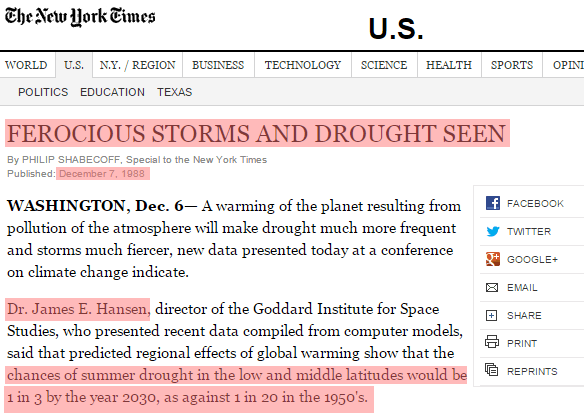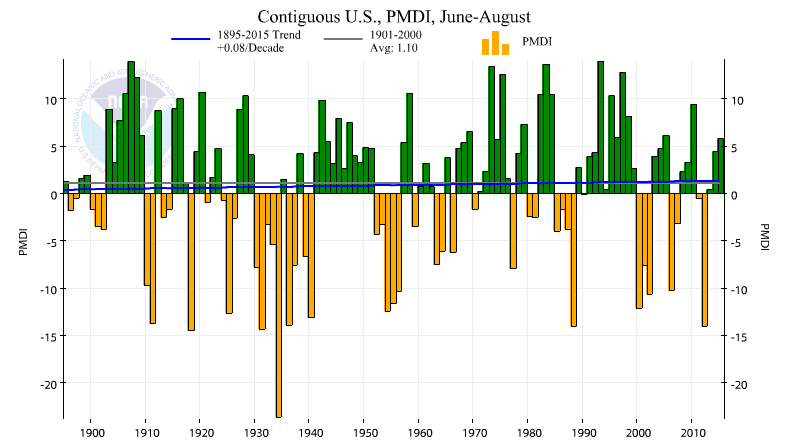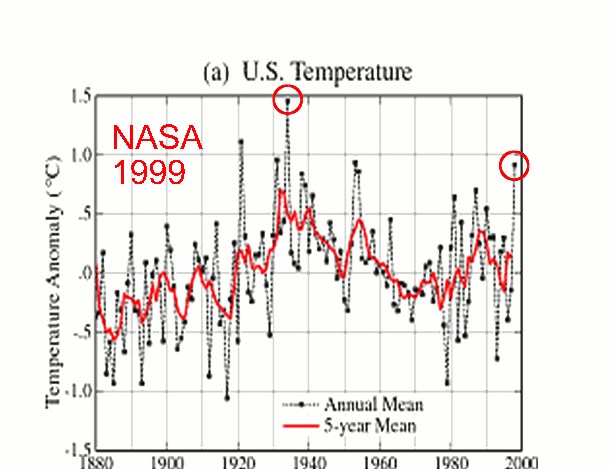In 1988, NASA’s James Hansen made these remarks about drought which were completely false, and utterly incompetent.
During the 1950’s the odds of summer drought were 50%, not the 5% Hansen claimed. And the frequency of summer drought in the US has declined over the last 120 years, not increased.
Climate at a Glance | National Centers for Environmental Information (NCEI)
Hansen is an incompetent buffoon, who can’t do math, has zero integrity, and makes ridiculous forecasts – which all fail. So he compensates by tampering with data and further defrauding the public.





Yes, NASA’s James Hanson is one of the recent well-paid propaganda artists.
After 1945, Nobel and Crafoord Prizes went to “scientists” who falsely claimed
1. Neutrons attract, rather than repel, other neutrons
2. Stars consume, rather than generate, interstellar hydrogen
That has nothing to do with this topic, Oliver.
Hansen is an incompetent buffoon, who can’t do math, has zero integrity, and makes ridiculous forecasts – which all fail.
Sounds like an accurate description of a politician!
Exactly!
I have a question about the definition of drought. Isn’t “drought” simply whenever an area has rain or snow that is scarce enough that it falls into the lower 10% or so for that area? In other words, don’t ALL areas — speaking long term that is — have a drought incidence of about 10% and a “severe drought” of about 5%? Certainly for shorter time periods, drought can be anything from 0% to 100%, but by definition, over the long term drought for any specific area is around 10%. Can someone correct me on that if I have it wrong?
As for the 1950s being a period when drought was only one in twenty… uh… I don’t see how. Certainly here in the US it was abnormally hot and dry.
http://www.nws.noaa.gov/om/csd/graphics/content/outreach/brochures/FactSheet_Drought.pdf
Believe it or not the NWS has four different definitions for drought:
Socioeconomic Drought
Socioeconomic drought is based on the impact of
drought conditions (meteorological, agricultural,
or hydrological drought) on supply and demand
of some economic goods. Socioeconomic drought
occurs when the demand for an economic good
exceeds supply as a result of a weather-related
deficit in water supply.
Meteorological Drought
Meteorological Drought is based on the degree
of dryness (rainfall deficit) and the length of
the dry period.
Agricultural Drought
Agricultural Drought is based on the impacts to agriculture by
factors such as rainfall deficits, soil water deficits, reduced ground
water, or reservoir levels needed for irrigation.
Hydrological Drought
Hydrological Drought is based on the impact of rainfall deficits
on the water supply such as stream flow, reservoir and lake
levels, and ground water table decline.
Holy cow, rah! Those all sound just a bit nebulous. Surely there must be some more objective way of determining what is, or is not, drought.
Or perhaps drought should just be redefined to be a synonym of “booga-booga.”
I like that, nebulous droughts! Especially the cloudy and misty ones. I think they deserve their own cabinet level agency, the Department of Booga-Booga.
The scariest drought of all is the “alarmist funding drought.”
if drought is what you want to talk about
you should be discussing the sun’s radiation
[man has nothing to do with it]
https://stevengoddard.wordpress.com/2015/09/15/us-summers-were-much-hotter-and-drier-prior-to-1960/#comment-540782